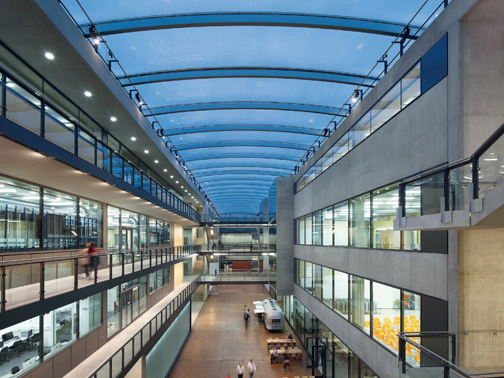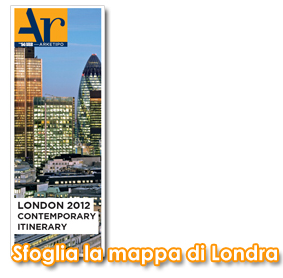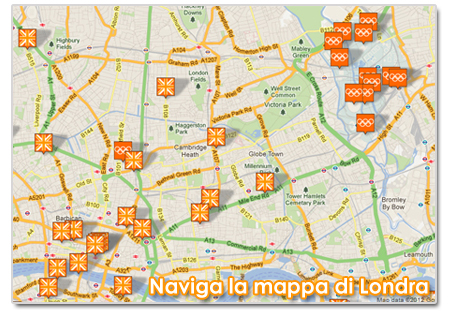Il recupero di un ex granaio e di due magazzini annessi crea l'opportunità per la rigenerazione di uno spazio urbano all'insegna delle connessioni fra gli ambienti e della flessibilità degli spazi. Un asse centrale lungo 110 m e coperto con un innovativo involucro traslucido di cuscini pneumatici di ETFE illumina e organizza le differenti funzioni. Il nuovo Campus che ospita il Central Saint Martins College of Arts and Design della University of Arts London (a nord delle stazioni ferroviarie di King's Cross e St Pancras nei pressi del Regent's Canal) è il cuore di uno dei più ampi progetti di rigenerazione urbana europei che riguardi una vasta area dismessa (26,8 ettari, 743.200 mq di spazi a uso misto residenziale, commerciale, terziario). L'area comprende diversi edifici di archeologia industriale costruiti all'apice del boom economico del periodo Vittoriano. Tra questi spiccano l'ex granaio, progettato da Lewis Cubitt nel 1851 per stoccare e distribuire nel resto del Paese il grano raccolto nei campi del Lincolnshire, e i due edifici di transito che lo fiancheggiano. L'imponente e disadorno ex granaio di mattoni, con pilastri di ghisa e solai lignei (55x31 m per sei piani fuori terra) viene restaurato per formare il nuovo fronte della scuola che ospita, nel complesso, circa 4.000 studenti e 1.000 docenti. I due edifici gemelli a shed che lo fiancheggiano, sviluppandosi a nord per 180 m, sono trasformati in laboratori didattici e, al piano terra, in spazi per la ristorazione, bar e negozi aperti alla collettività per dare nuova vita all'area. Lo spazio tra questi, una volta occupato da una sequenza di corpi edilizi di analoga tipologia (di cui dopo la demolizione, rimane traccia sulla muratura di mattoni faccia a vista dell'ex granaio), ospita un edificio di nuova costruzione di quattro piani fuori terra realizzato in calcestruzzo armato a vista. La scala dimensionale della nuova addizione corrisponde a quella dell'ex granaio, proseguendo così la sua imponente massa lungo l'estensione longitudinale del sito. Esso ospita gli studios e gli spazi per le diverse performance artistiche e, all'estremità nord, il Performing Arts: un teatro da 350 posti con ingresso indipendente, spazi per le prove e l'insegnamento. Caratterizzato da una facciata di U-glass che emerge a sbalzo dal volume principale, il teatro rappresenta la facciata contemporanea dell'intervento. Tutti gli ambienti sono progettati per massimizzare le connessioni dei diversi dipartimenti incoraggiando, con la progettazione spaziale, uno degli obiettivi della CSM College of Arts and Design: incentivare la creatività attraverso l'interazione tra le discipline, il dialogo e la collaborazione tra gli studenti. Questa interazione non avviene soltanto negli spazi normalmente destinati all'incontro (bar, spazi per seminari trasversali), ma in tutto il campus, evitando barriere tra le diverse zone, facendo largo uso di pareti vetrate per separare gli ambienti e progettando spazi flessibili, che possono cioè essere orchestrati e trasformati in rapporto a nuove forme di sperimentazione didattica. Gli ambienti sono organizzati intorno a un asse viario centrale che corre da sud a nord (lungo 110 m, largo 12 m e alto 20 m), concepito come un'arena dinamica per la vita degli studenti. Esso è caratterizzato da una copertura semitrasparente di ETFE che lo inonda di luce naturale. L'asse centrale è ritmato dalla sequenza dei corpi di servizio che contengono gli ascensori, le scale e i servizi igienici. Il suo volume è attraversato in più punti da ponti sospesi che uniscono gli spazi per il lavoro ospitati negli edifici a shed, offrendo, al contempo, un luogo aggiuntivo per gli incontri informali e per il relax. Tra il nuovo edificio e l'ex granaio, all'estremità sud dalla via centrale, si trova una seconda strada coperta, aperta al pubblico. Il collegamento, che attraversa il complesso da est a ovest, fornisce un break visivo tra la vecchia e la nuova costruzione. La sua copertura è un'estensione di quella del nuovo edificio. Essa è caratterizzata da tre grandi lucernari circolari (diametro 3,8 m) formati da cuscini trasparenti di ETFE con integrato un sistema a Led per illuminare scenograficamente lo spazio in assenza di luce naturale. L'ambiente di transito è caratterizzato da due ascensori, ricavati incidendo verticalmente per la sua intera estensione la muratura di mattoni faccia vista del fronte nord del vecchio granaio. Realizzati in cristallo, essi richiamano, con il loro movimento, quello verticale del grano, che ha dato al complesso la sua funzione originaria. Un "taglio" analogo è ricavato nella porzione centrale dell'ex granaio, dove un grande pozzo di luce illumina gli ambienti della biblioteca e gli uffici, coadiuvando in questa funzione le aperture esistenti del fronte sud che scandiscono ritmicamente la facciata principale dell'edificio.
The refurbishment of an old barn and of two adjacent warehouses creates the opportunity to regenerate a urban space focussing on connecting the environments and to allow spatial flexibility. A central 110 m long route covered with an innovative translucent envelope made made of ETFE pneumatic cushions lights and distributes the different functions. The new Campus which houses the Central Saint Martins College of Arts and Design of the University of Arts London (north of the King's Cross and St Pancras stations and located near the Regent's Canal) is the heart of one of the largest European urban regeneration projects, which interests a disused area (26.8 hectares, 743,200 mq of spaces with a mixed residential and commercial use). The area comprises of different industrial archaeology buildings built at the peak of the Victorian economic boom. Amongst these we need to mention the old barn designed by Lewis Cubitt in 1851 to store and distribute to the rest of the country the wheat coming from the Lincolnshire fi elds as well as the two adjacent buildings. The majestic and bare old barn made of bricks, cast iron columns and wooden slabs (55x31 m for six floors above ground) has been refurbished to create the new front elevation of the school which overall includes about 4,000 students and 1,000 teachers. The two twin shed buildings adjacent to the barn and stretching to the north for 180 m have been transformed into teaching laboratories and, on the ground floor, into food courts, bars and shops open to the community to boost new life to the area. The space between these, once occupied by a sequence of volumes with similar typology (of which it is possible to see the remains after the demolition on the fair faced brick facade of the old barn), is now fi lled by a new four storey building made of reinforced concrete. The dimensional scale of the new building is comparable to that of the old barn thus continuing its large mass along the long extension of the site. This building houses the studios and the spaces for the different artistic performances and, on the north extremity, the Performing Arts which is a 350 sets theatre with an independent entrance, with spaces for rehearsal and teaching. This theatre is characterised by a U-glass facade which projects from the main volume and it represents the contemporary facade of the intervention. All the areas are designed to maximise the connections between the different departments while encouraging, with the spatial design, one of the objectives of the CSM College of Arts and Design: promoting creativity through the interaction amongst the disciplines and the dialogue and collaboration between students. This interaction not only takes place in the spaces normally used to meet (bar, spaces for seminars) but also through the entire campus avoiding barriers between the various zones making wide use of glazed partitions to separates the areas and designing fl exible spaces which therefore can be planned and transformed in relation to new forms of educational systems. The spaces are arranged along a central route which runs from south to north (110 m long, 12 m wide and 20 m tall) conceived like a dynamic arena for the students life. This is characterised by a ETFE semi-transparent roof which floods it with natural light. The central route is marked by the sequence of service cores which contain the lifts, the stairs and the toilets. Its volume is crossed in multiple locations by suspended bridges which connect the work spaces included in the shed buildings while offering an additional location for informal meetings and to relax. Between the new building and the new barn, on the southern end of the main route, there is a second covered road which is open to the public. The connection which crosses the complex from east to west provides a visual break between the old and the new construction. Its roof is an extension of that of the new building. It is characterised by three rounded roof lights (3.8 m diameter) made of ETFE cushions with an integrated LED system to provide a scenic light in absence of natural light. The transit space is characterised by two lifts created in a vertical incision of the entire extension of the fair faced brick wall of the north elevation of the old barn. The lifts are made of crystal and recall with their movements that vertical wave made by wheat which provided the complex with its original function. A similar cut has been created in the central portion of the old barn where a large light well gives light to the library's spaces and to the offi ces providing support to the existing openings of the south elevation which rhythmically mark the building's main facade.
scheda progetto
destinazione d'uso/use: università/university
tipologia/type: recupero/refurbishment
progetto architettonico/architectural design: Stanton Williams
committente/client: University of the Arts London
progetto strutture/structure engineer: Scott Wilson
periodo di costruzione/construction period: 2008-2011
superficie/area: 40,000 mq
costo/cost: 240,62 milioni euro/2,1 million pounds
























